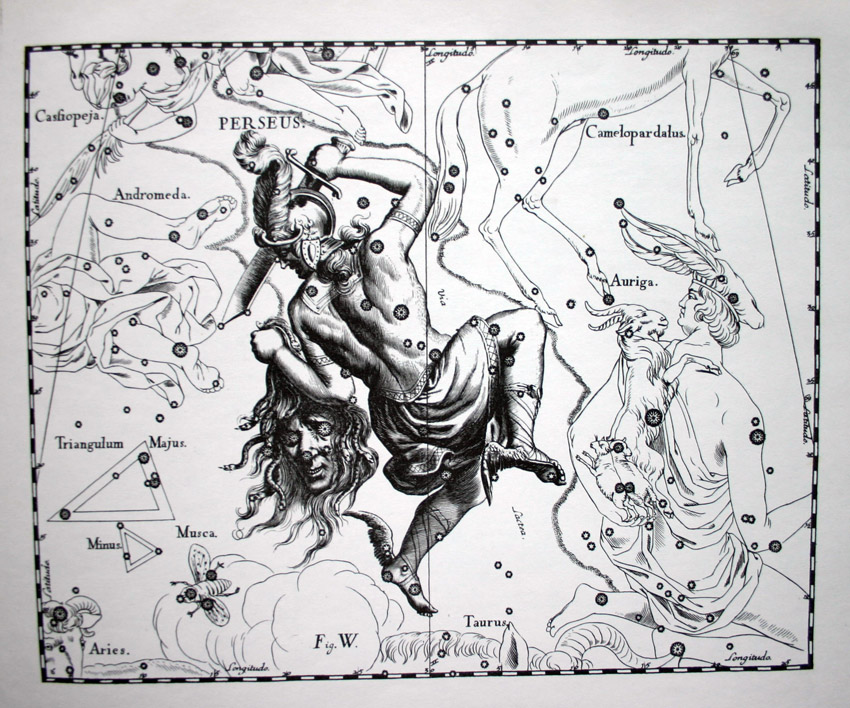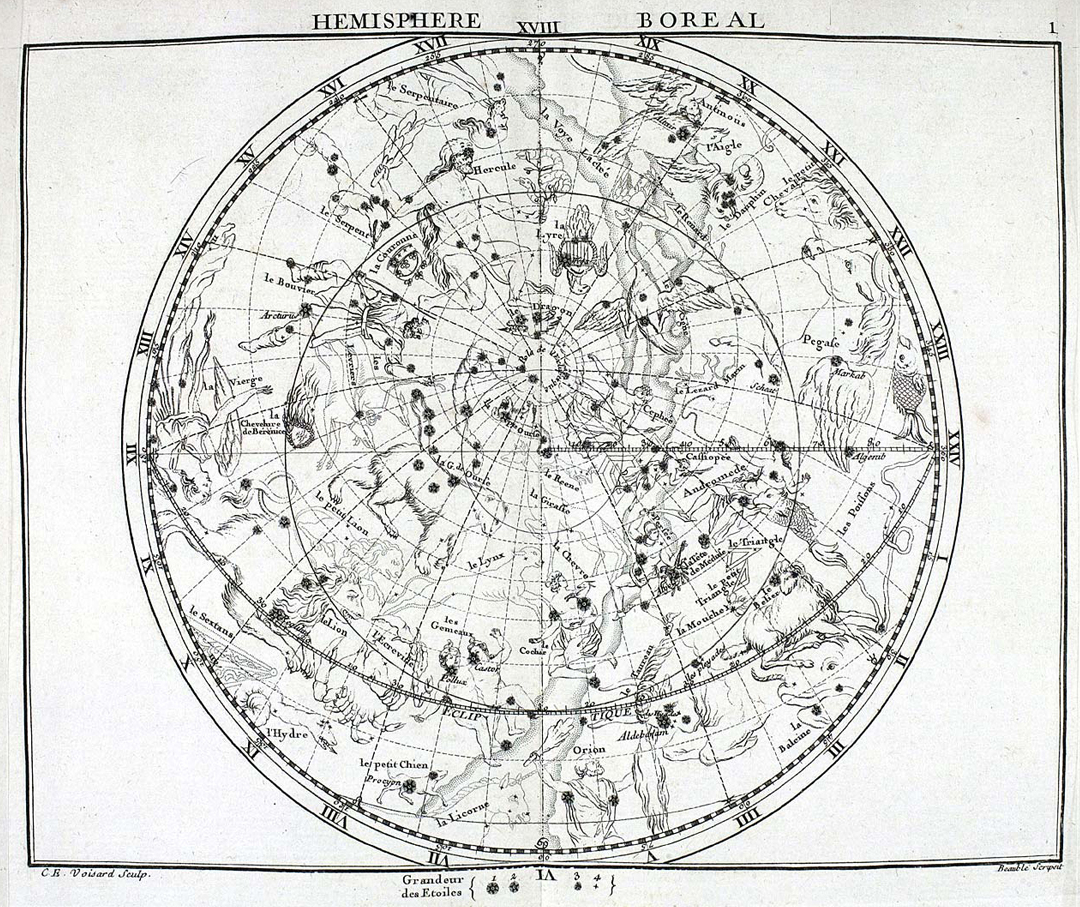|
Histoire Céleste Française
''Histoire céleste française'' (''French Celestial History'') is an astrometric star catalogue published in 1801 by the French astronomer Jérôme Lalande and his staff at the Paris Observatory. This star catalog consists of the locations and apparent magnitudes of 47,390 stars, up to magnitude 9. Stars are identified by common name, Bayer designation or Flamsteed designation, when available. It also contains observations of other astronomical phenomena. It was the largest and most complete star catalog of its day. This publication is a collection of several books of astronomical recordings taken over the previous decade at the observatory. A significant rewriting of this popular catalog was published by Francis Baily in 1847. It is from this catalog that the star reference numbers were assigned that continue in use to this day, such as for ''Lalande 21185 Lalande 21185 (also known as BD+36 2147, Gliese 411, and HD 95735) is a star in the south of Ursa Major. It is ... [...More Info...] [...Related Items...] OR: [Wikipedia] [Google] [Baidu] |
Astrometry
Astrometry is a branch of astronomy that involves precise measurements of the positions and movements of stars and other celestial bodies. It provides the kinematics and physical origin of the Solar System and this galaxy, the Milky Way. History The history of astrometry is linked to the history of star catalogues, which gave astronomers reference points for objects in the sky so they could track their movements. This can be dated back to Hipparchus, who around 190 BC used the catalogue of his predecessors Timocharis and Aristillus to discover Earth's precession. In doing so, he also developed the brightness scale still in use today. Hipparchus compiled a catalogue with at least 850 stars and their positions. Hipparchus's successor, Ptolemy, included a catalogue of 1,022 stars in his work the ''Almagest'', giving their location, coordinates, and brightness. In the 10th century, Abd al-Rahman al-Sufi carried out observations on the stars and described their positions, magn ... [...More Info...] [...Related Items...] OR: [Wikipedia] [Google] [Baidu] |
Star Catalogue
A star catalogue is an astronomical catalogue that lists stars. In astronomy, many stars are referred to simply by catalogue numbers. There are a great many different star catalogues which have been produced for different purposes over the years, and this article covers only some of the more frequently quoted ones. Star catalogues were compiled by many different ancient people, including the Babylonians, Greeks, Chinese, Persians, and Arabs. They were sometimes accompanied by a star chart for illustration. Most modern catalogues are available in electronic format and can be freely downloaded from space agencies' data centres. The largest is being compiled from the spacecraft Gaia and thus far has over a billion stars. Completeness and accuracy are described by the faintest limiting magnitude V (largest number) and the accuracy of the positions. Historical catalogues Ancient Near East From their existing records, it is known that the ancient Egyptians recorded the names of ... [...More Info...] [...Related Items...] OR: [Wikipedia] [Google] [Baidu] |
Jérôme Lalande
Joseph Jérôme Lefrançois de Lalande (; 11 July 1732 – 4 April 1807) was a French astronomer, freemason and writer. Biography Lalande was born at Bourg-en-Bresse (now in the département of Ain) to Pierre Lefrançois and Marie‐Anne‐Gabrielle Monchinet. His parents sent him to Paris to study law, but as a result of lodging in the Hôtel Cluny, where Delisle had his observatory, he was drawn to astronomy, and became the zealous and favoured pupil of both Delisle and Pierre Charles Le Monnier. Having completed his legal studies, he was about to return to Bourg to practise as an advocate, when Lemonnier obtained permission to send him to Berlin, to make observations on the lunar parallax in concert with those of Lacaille at the Cape of Good Hope. The successful execution of this task obtained for him, before he was twenty-one, admission to the Academy of Berlin, as well as his election as an adjunct astronomer to the French Academy of Sciences. He now devoted himse ... [...More Info...] [...Related Items...] OR: [Wikipedia] [Google] [Baidu] |
Paris Observatory
The Paris Observatory (french: Observatoire de Paris ), a research institution of the Paris Sciences et Lettres University, is the foremost astronomical observatory of France, and one of the largest astronomical centers in the world. Its historic building is on the Left Bank of the Seine in central Paris, but most of the staff work on a satellite campus in Meudon, a suburb southwest of Paris. The Paris Observatory was founded in 1667. Construction was completed by the early 1670s and coincided with a major push for increased science, and the founding of the Royal Academy of Sciences. King Louis XIV's minister of finance organized a "scientific powerhouse" to increase understanding of astronomy, maritime navigation, and science in general. Through the centuries the Paris Observatory has continued in support of astronomical activities, and in the 21st century connects multiple sites and organizations, supporting astronomy and science, past and present. Constitution Adminis ... [...More Info...] [...Related Items...] OR: [Wikipedia] [Google] [Baidu] |
Apparent Magnitude
Apparent magnitude () is a measure of the brightness of a star or other astronomical object observed from Earth. An object's apparent magnitude depends on its intrinsic luminosity, its distance from Earth, and any extinction of the object's light caused by interstellar dust along the line of sight to the observer. The word ''magnitude'' in astronomy, unless stated otherwise, usually refers to a celestial object's apparent magnitude. The magnitude scale dates back to the ancient Roman astronomer Claudius Ptolemy, whose star catalog listed stars from 1st magnitude (brightest) to 6th magnitude (dimmest). The modern scale was mathematically defined in a way to closely match this historical system. The scale is reverse logarithmic: the brighter an object is, the lower its magnitude number. A difference of 1.0 in magnitude corresponds to a brightness ratio of \sqrt /math>, or about 2.512. For example, a star of magnitude 2.0 is 2.512 times as bright as a star of magnitude 3.0 ... [...More Info...] [...Related Items...] OR: [Wikipedia] [Google] [Baidu] |
Bayer Designation
A Bayer designation is a stellar designation in which a specific star is identified by a Greek or Latin letter followed by the genitive form of its parent constellation's Latin name. The original list of Bayer designations contained 1,564 stars. The brighter stars were assigned their first systematic names by the German astronomer Johann Bayer in 1603, in his star atlas '' Uranometria''. Bayer catalogued only a few stars too far south to be seen from Germany, but later astronomers (including Nicolas-Louis de Lacaille and Benjamin Apthorp Gould) supplemented Bayer's catalog with entries for southern constellations. Scheme Bayer assigned a lowercase Greek letter (alpha (α), beta (β), gamma (γ), etc.) or a Latin letter (A, b, c, etc.) to each star he catalogued, combined with the Latin name of the star's parent constellation in genitive (possessive) form. The constellation name is frequently abbreviated to a standard three-letter form. For example, Aldebaran in the constellation ... [...More Info...] [...Related Items...] OR: [Wikipedia] [Google] [Baidu] |
Flamsteed Designation
A Flamsteed designation is a combination of a number and constellation name that uniquely identifies most naked eye stars in the modern constellations visible from southern England. They are named for John Flamsteed who first used them while compiling his '' Historia Coelestis Britannica''. (Flamsteed used a telescope, and the catalog also includes some stars which are relatively bright but not necessarily visible with the naked eye.) Description Flamsteed designations for stars are similar to Bayer designations, except that they use numbers instead of Greek and Roman letters. Each star is assigned a number and the Latin genitive of the constellation it lies in (see 88 modern constellations for a list of constellations and the genitive forms of their names). Flamsteed designations were assigned to 2554 stars. The numbers were originally assigned in order of increasing right ascension within each constellation, but due to the effects of precession they are now slightly out o ... [...More Info...] [...Related Items...] OR: [Wikipedia] [Google] [Baidu] |
Francis Baily
Francis Baily (28 April 177430 August 1844) was an English astronomer. He is most famous for his observations of " Baily's beads" during a total eclipse of the Sun. Baily was also a major figure in the early history of the Royal Astronomical Society, as one of the founders and as the president four times. Life Baily was born at Newbury in Berkshire in 1774 to Richard Baily. After a tour in the unsettled parts of North America in 1796–1797, his journal of which was edited by Augustus de Morgan in 1856, Baily entered the London Stock Exchange in 1799. The successive publication of ''Tables for the Purchasing and Renewing of Leases'' (1802), of ''The Doctrine of Interest and Annuities'' (1808), and ''The Doctrine of Life-Annuities and Assurances'' (1810), earned him a high reputation as a writer on life-contingencies; he amassed a fortune through diligence and integrity and retired from business in 1825, to devote himself wholly to astronomy. This also cites * J. Herschel's ... [...More Info...] [...Related Items...] OR: [Wikipedia] [Google] [Baidu] |
Lalande 21185
Lalande 21185 (also known as BD+36 2147, Gliese 411, and HD 95735) is a star in the south of Ursa Major. It is the apparent brightest red dwarf in the northern hemisphere.Only AX Microscopii and Lacaille 9352, in the southern hemisphere, are brighter Despite this, and being relatively close by, it is (as are all red dwarfs) very dim, being only magnitude 7.5 in visible light and thus too faint to be seen with the unaided eye. The star is visible through a small telescope or binoculars. At approximately away it is one of the stars nearest to the Solar System; only the Alpha Centauri system, Barnard's Star, and Wolf 359 and the brown dwarfs Luhman 16 and WISE 0855−0714 are known to be closer. Because of its proximity it is a frequent subject for astronomical surveys and other research and thus is known by numerous other designations, most commonly Gliese 411 and HD 95735. In approximately 19,900 years it will be at its closest, about 4.65 ly (1.43 pc) from the Sun, ... [...More Info...] [...Related Items...] OR: [Wikipedia] [Google] [Baidu] |
British Association For The Advancement Of Science
The British Science Association (BSA) is a charity and learned society founded in 1831 to aid in the promotion and development of science. Until 2009 it was known as the British Association for the Advancement of Science (BA). The current Chief Executive is Katherine Mathieson. The BSA's mission is to get more people engaged in the field of science by coordinating, delivering, and overseeing different projects that are suited to achieve these goals. The BSA "envisions a society in which a diverse group of people can learn and apply the sciences in which they learn." and is managed by a professional staff located at their Head Office in the Wellcome Wolfson Building. The BSA offers a wide variety of activities and events that both recognize and encourage people to be involved in science. These include the British Science Festival, British Science Week, the CREST Awards, Huxley Summit, Media Fellowships Scheme, along with regional and local events. History Foundation The Ass ... [...More Info...] [...Related Items...] OR: [Wikipedia] [Google] [Baidu] |
SIMBAD
SIMBAD (the Set of Identifications, Measurements and Bibliography for Astronomical Data) is an astronomical database of objects beyond the Solar System. It is maintained by the Centre de données astronomiques de Strasbourg (CDS), France. SIMBAD was created by merging the Catalog of Stellar Identifications (CSI) and the Bibliographic Star Index as they existed at the Meudon Computer Centre until 1979, and then expanded by additional source data from other catalogues and the academic literature. The first on-line interactive version, known as Version 2, was made available in 1981. Version 3, developed in the C language and running on UNIX stations at the Volgograd Observatory, was released in 1990. Fall of 2006 saw the release of Version 4 of the database, now stored in PostgreSQL, and the supporting software, now written entirely in Java. JP11 is a star catalogue containing about 4,000 objects. Currently it exists only as a part of the SIMBAD database. , SIMBAD contains infor ... [...More Info...] [...Related Items...] OR: [Wikipedia] [Google] [Baidu] |
1801 Non-fiction Books
Eighteen or 18 may refer to: * 18 (number), the natural number following 17 and preceding 19 * one of the years 18 BC, AD 18, 1918, 2018 Film, television and entertainment * ''18'' (film), a 1993 Taiwanese experimental film based on the short story ''God's Dice'' * ''Eighteen'' (film), a 2005 Canadian dramatic feature film * 18 (British Board of Film Classification), a film rating in the United Kingdom, also used in Ireland by the Irish Film Classification Office * 18 (''Dragon Ball''), a character in the ''Dragon Ball'' franchise * "Eighteen", a 2006 episode of the animated television series ''12 oz. Mouse'' Music Albums * ''18'' (Moby album), 2002 * ''18'' (Nana Kitade album), 2005 * '' 18...'', 2009 debut album by G.E.M. Songs * "18" (5 Seconds of Summer song), from their 2014 eponymous debut album * "18" (One Direction song), from their 2014 studio album ''Four'' * "18", by Anarbor from their 2013 studio album '' Burnout'' * "I'm Eighteen", by Alice Cooper commonly ... [...More Info...] [...Related Items...] OR: [Wikipedia] [Google] [Baidu] |








